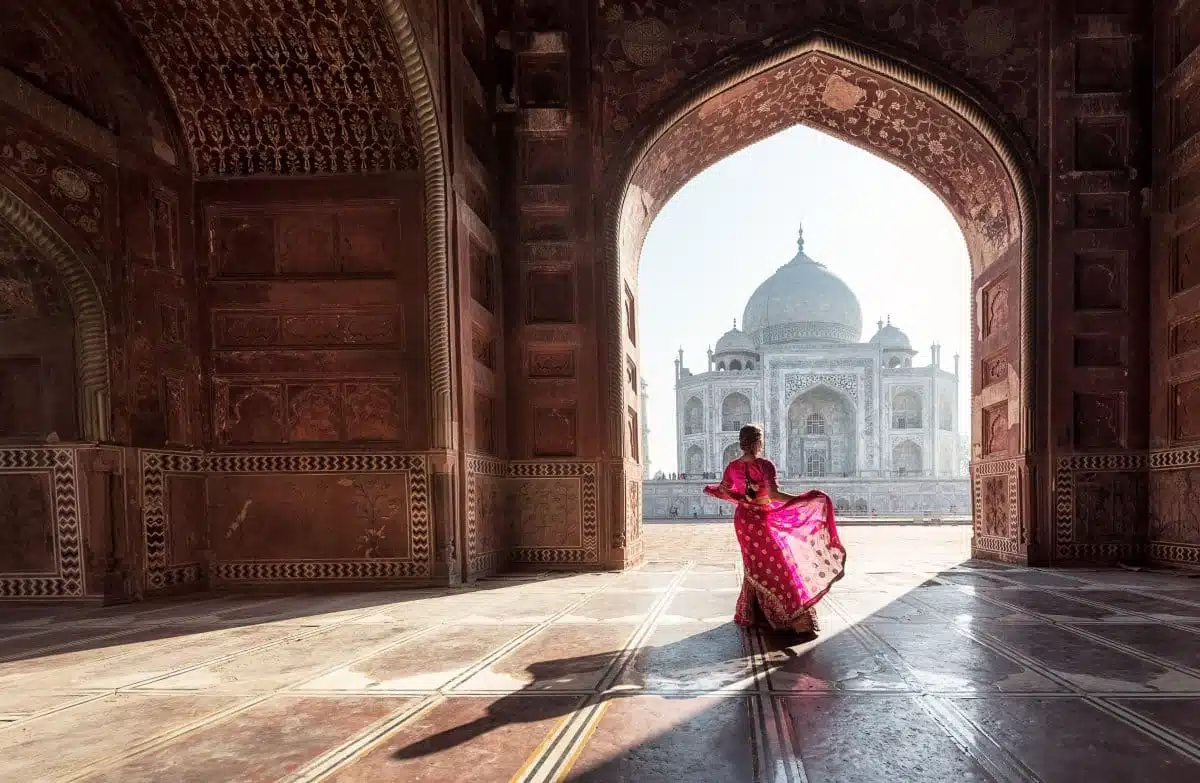The Golden Triangle, encompassing Delhi, Agra, and Jaipur, offers an incredible journey through India’s rich history, vibrant culture, and breathtaking architecture. This iconic route explores the heart of India, providing a glimpse into the country’s royal past, colonial history, and architectural wonders. The journey through these three cities is akin to a passage through time, where each destination boasts its unique magic, from ancient forts and palaces to bustling bazaars and serene temples.
1. Delhi – The Capital’s Contrast
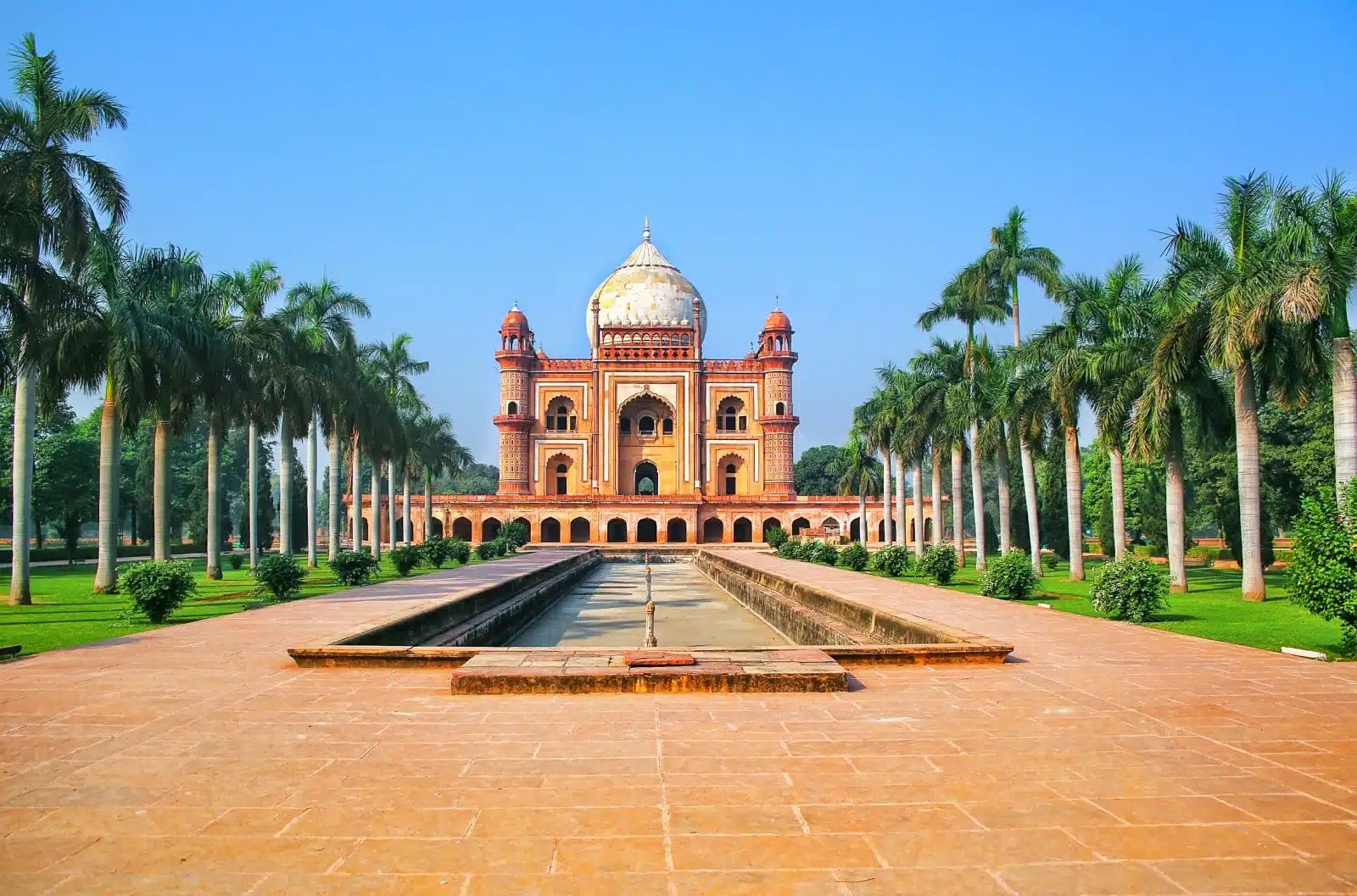
Image Credit: Shutterstock / Don Mammoser
Delhi, India’s capital, is where ancient history and modernity blend seamlessly. The city is divided into two parts: Old Delhi, a labyrinth of narrow lanes, age-old mosques, and bustling markets; and New Delhi, the imperial city created by the British Raj, characterized by wide boulevards, stately government buildings, and verdant gardens. Key attractions include the majestic Red Fort, the serene Jama Masjid, the bustling Chandni Chowk, the towering Qutub Minar, and the peaceful Humayun’s Tomb. Delhi is also a culinary heaven, offering an array of flavors from street food to fine dining.
Insider’s Tip: Visit the lesser-known Mehrauli Archaeological Park in Delhi, home to over 100 historically significant monuments.
When to Travel: The best time to visit Delhi is from October to March, when the weather is most pleasant.
How to Get There: Delhi is well-connected by air with two major airports, Indira Gandhi International and Domestic Airport. It also has a robust network of railways and roads connecting it to major cities across India.
2. Agra – The City of Love
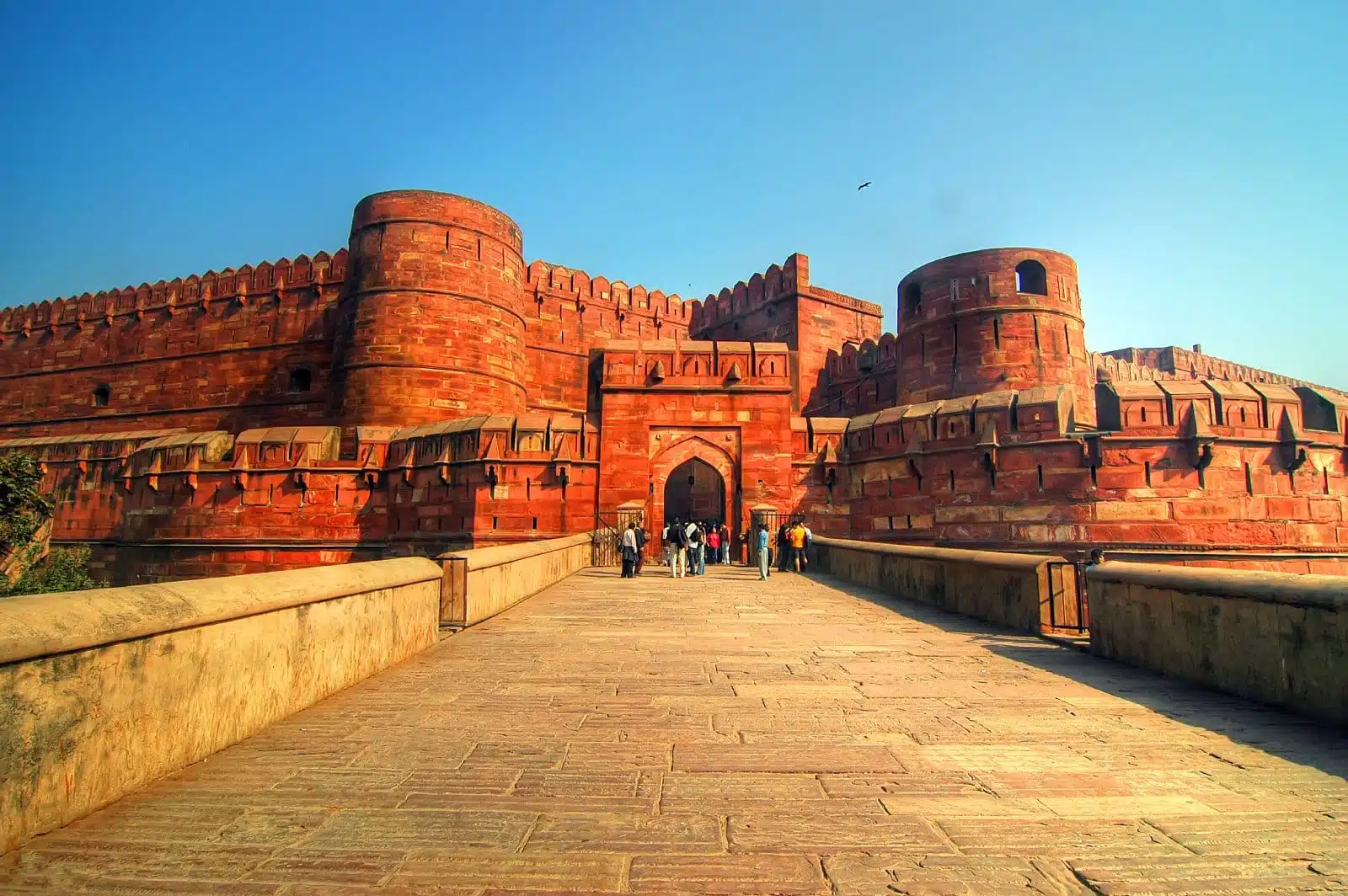
Image Credit: Shutterstock / Krishna.Wu
Agra is synonymous with the Taj Mahal, an eternal symbol of love. This UNESCO World Heritage site, built by Emperor Shah Jahan in memory of his wife, Mumtaz Mahal, attracts millions of visitors annually. Beyond the Taj, Agra Fort, and Fatehpur Sikri are profound examples of the Mughal Empire’s architectural brilliance. Agra’s rich craft tradition, including marble inlay work and leather goods, offers unique souvenirs.
Insider’s Tip: Take a boat ride on the Yamuna River during sunrise or sunset for a unique view of the Taj Mahal.
When to Travel: November to February is ideal, avoiding the extreme summer heat and monsoon season.
How to Get There: Agra is accessible by road via the Yamuna Expressway from Delhi. It also has a railway station with frequent connections to and from major cities.
3. Jaipur – The Pink City
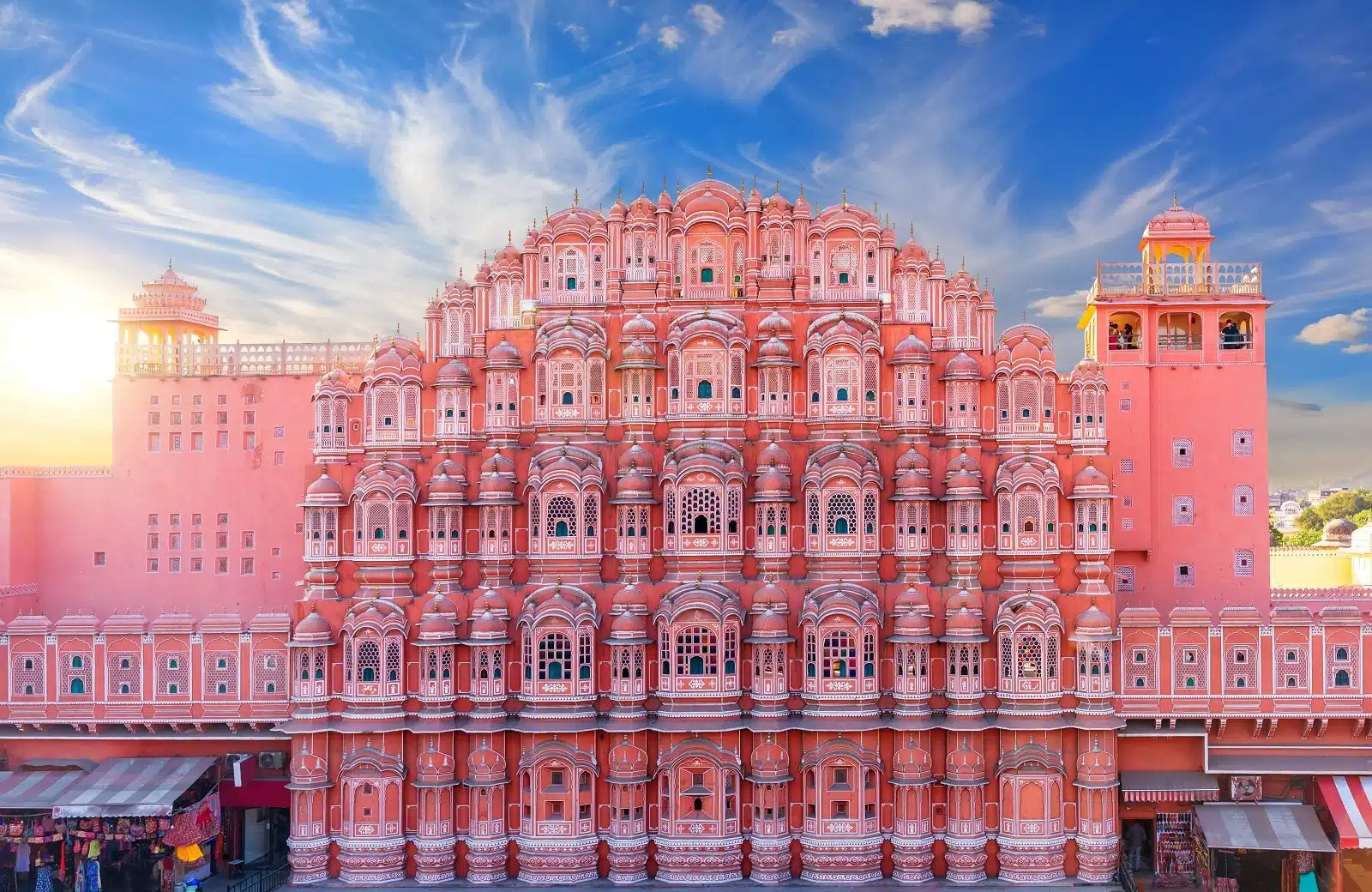
Image Credit: Shutterstock / AlexAnton
Jaipur, the vibrant capital of Rajasthan, is famed for its rich Rajput history, stunning forts, and splendid palaces. The city’s plan, based on Indian Vastu Shastra, features the City Palace, Amber Fort, Hawa Mahal, and Jantar Mantar, reflecting a blend of Rajput and Mughal architecture. Jaipur is also a shopper’s paradise, known for its gems, jewelry, textiles, and handicrafts. The city’s bustling bazaars, such as Johari and Bapu, offer a colorful array of traditional Rajasthani goods.
Insider’s Tip: Explore the Anokhi Museum of Hand Printing to understand the local craft of block printing.
When to Travel: October to March offers pleasant weather, ideal for exploring the city.
How to Get There: Jaipur is well-connected by air, with flights from major Indian cities. It’s also accessible by road and rail, making it easy to include in the Golden Triangle tour.
4. Exploring the Markets of Delhi
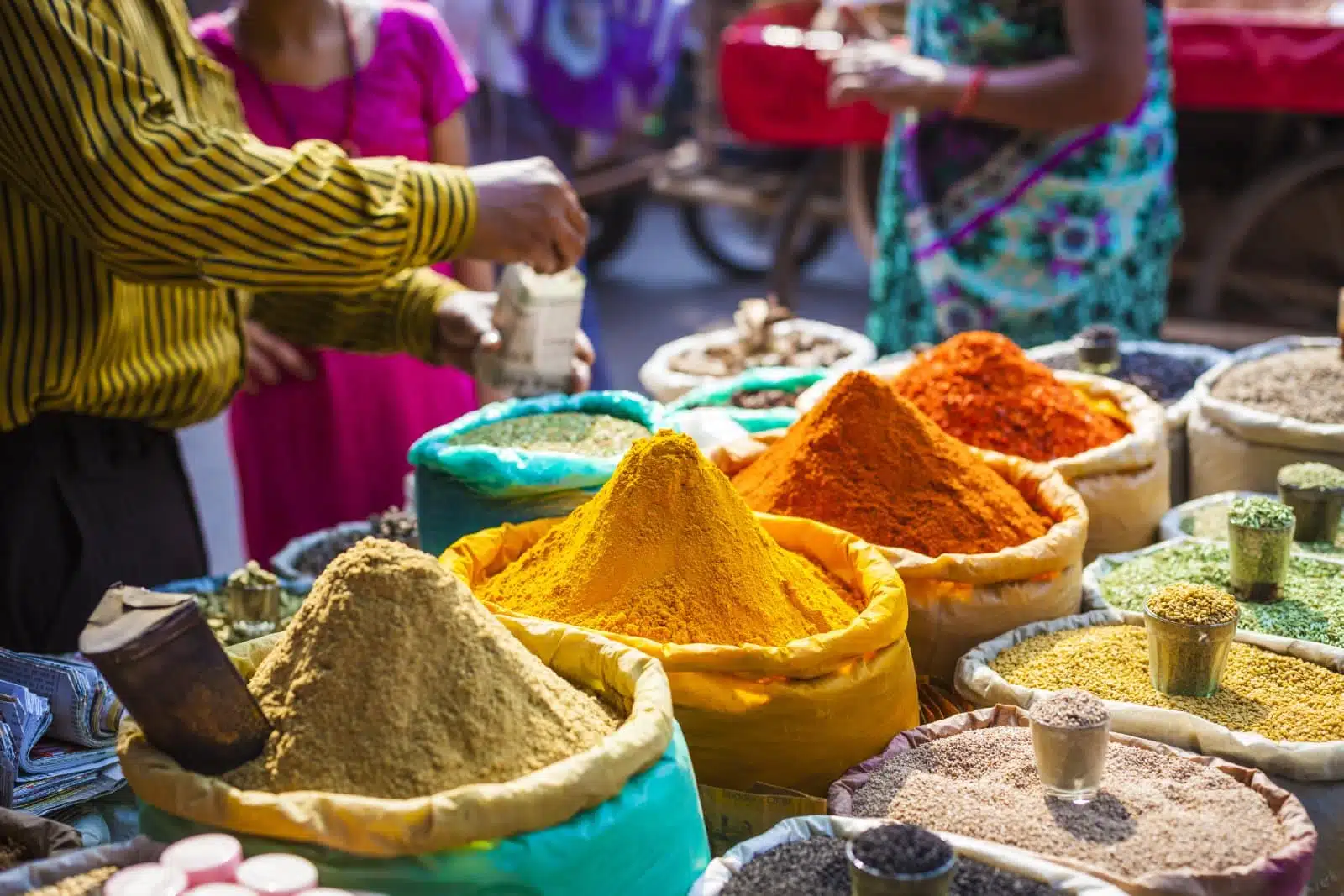
Image Credit: Shutterstock / Curioso.Photography
Delhi’s markets are a vibrant example of India’s diverse culture, offering everything from luxurious silk fabrics to handcrafted artifacts. Chandni Chowk, one of the oldest and busiest markets in Old Delhi, provides a sensory overload with its narrow lanes filled with the scent of spices and colorful textiles. For a more upscale shopping experience, Khan Market offers branded boutiques, excellent bookshops, and some of Delhi’s best cafes and restaurants. Dilli Haat, an open-air market, showcases handicrafts and cuisines from across India, providing a taste of the country’s regional diversity.
Insider’s Tip: Visit Chandni Chowk early in the morning to avoid the crowds and experience the market’s ambiance as it wakes up.
When to Travel: October to March offers pleasant weather for exploring outdoor markets.
How to Get There: Metro services in Delhi are efficient and connect to major market locations, offering a convenient way to navigate the city.
5. Agra’s Mughal Heritage
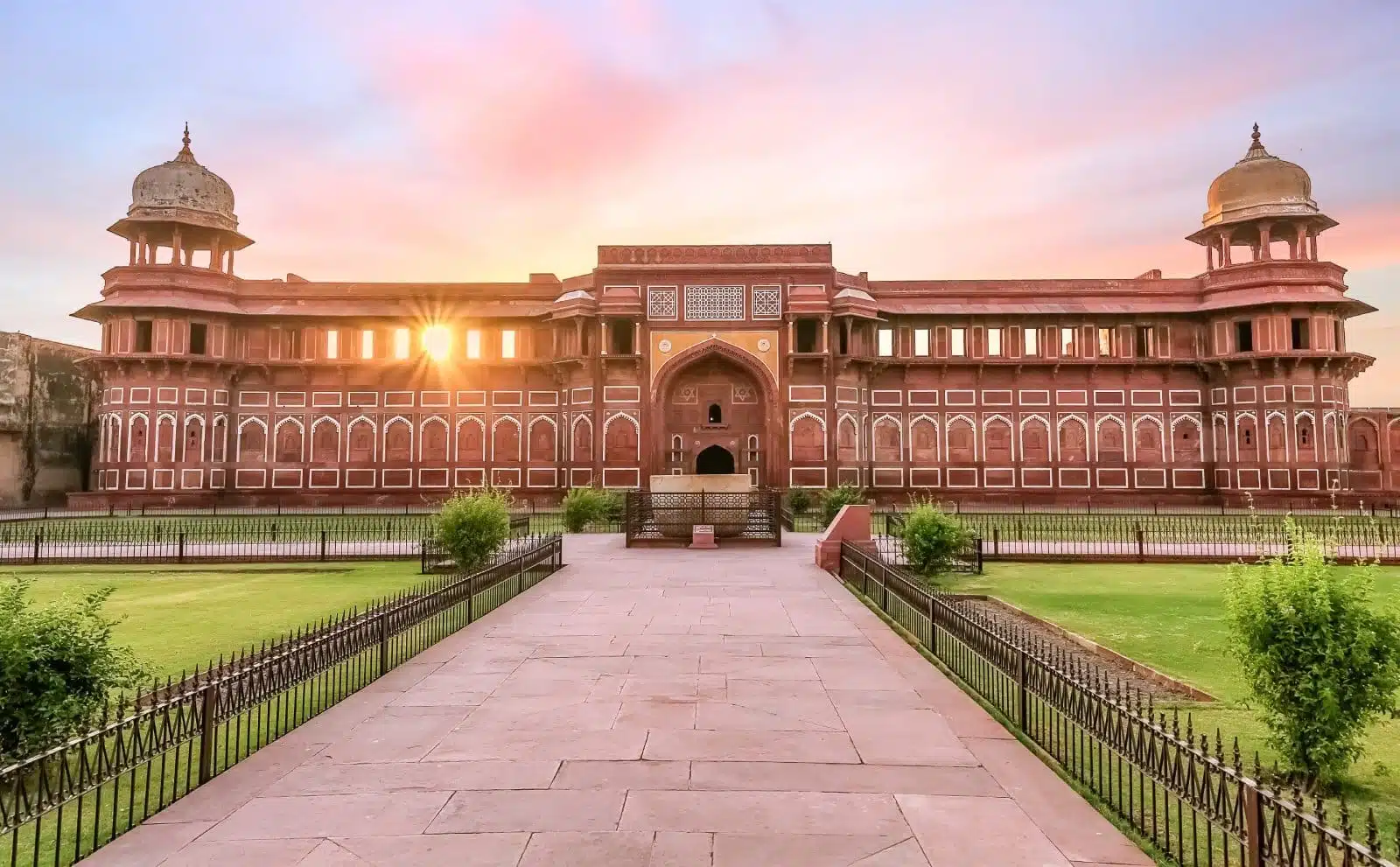
Image Credit: Shutterstock / Roop_Dey
While the Taj Mahal is Agra’s crown jewel, the city’s Mughal heritage offers much more to explore. The Agra Fort, a UNESCO World Heritage Site, is a red sandstone fortress that served as the residence of the emperors of the Mughal Dynasty. It houses several exquisite buildings, such as the Jahangir Palace and the Khas Mahal. Akbar’s Tomb in Sikandra offers a serene and less crowded historical site, showcasing the architectural brilliance of Mughal art and design.
Insider’s Tip: Spend an evening at Mehtab Bagh for a unique and tranquil view of the Taj Mahal across the Yamuna River, especially stunning at sunset.
When to Travel: November to February is ideal, avoiding the extreme heat and monsoon season.
How to Get There: Agra is well-connected by train from New Delhi, with the journey taking around 2-3 hours.
6. Jaipur’s Amer Fort and Hawa Mahal
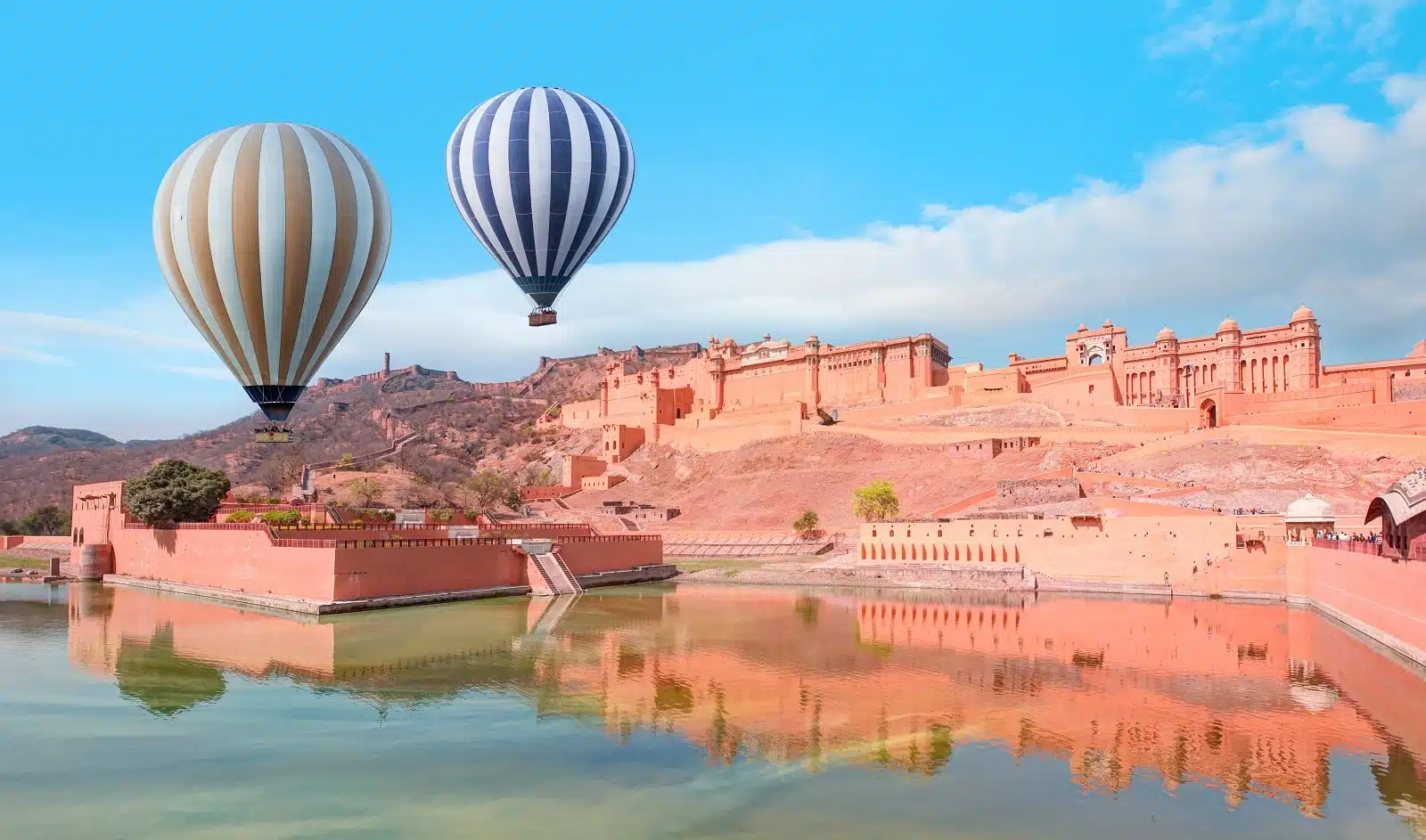
Image Credit: Shutterstock / muratart
Jaipur, the Pink City, is famed for its rich architectural heritage, with the Amer Fort and Hawa Mahal as iconic landmarks. Amer Fort, located on a hilltop, offers breathtaking views and a glimpse into the lavish lifestyle of the Rajput Maharajas. The fort’s Sheesh Mahal, or Mirror Palace, is a stunning example of artistic craftsmanship. Hawa Mahal, or the Palace of Winds, is known for its unique façade featuring 953 small windows, designed to allow royal ladies to observe street festivals while remaining unseen.
Insider’s Tip: For a memorable experience, take an early morning elephant ride to the entrance of Amer Fort, avoiding the midday heat and crowds.
When to Travel: October to March provides comfortable weather for exploring Jaipur’s outdoor attractions.
How to Get There: Jaipur is accessible by air, with a well-connected airport, and by road and rail from Delhi and Agra.
7. Culinary Delights of the Golden Triangle
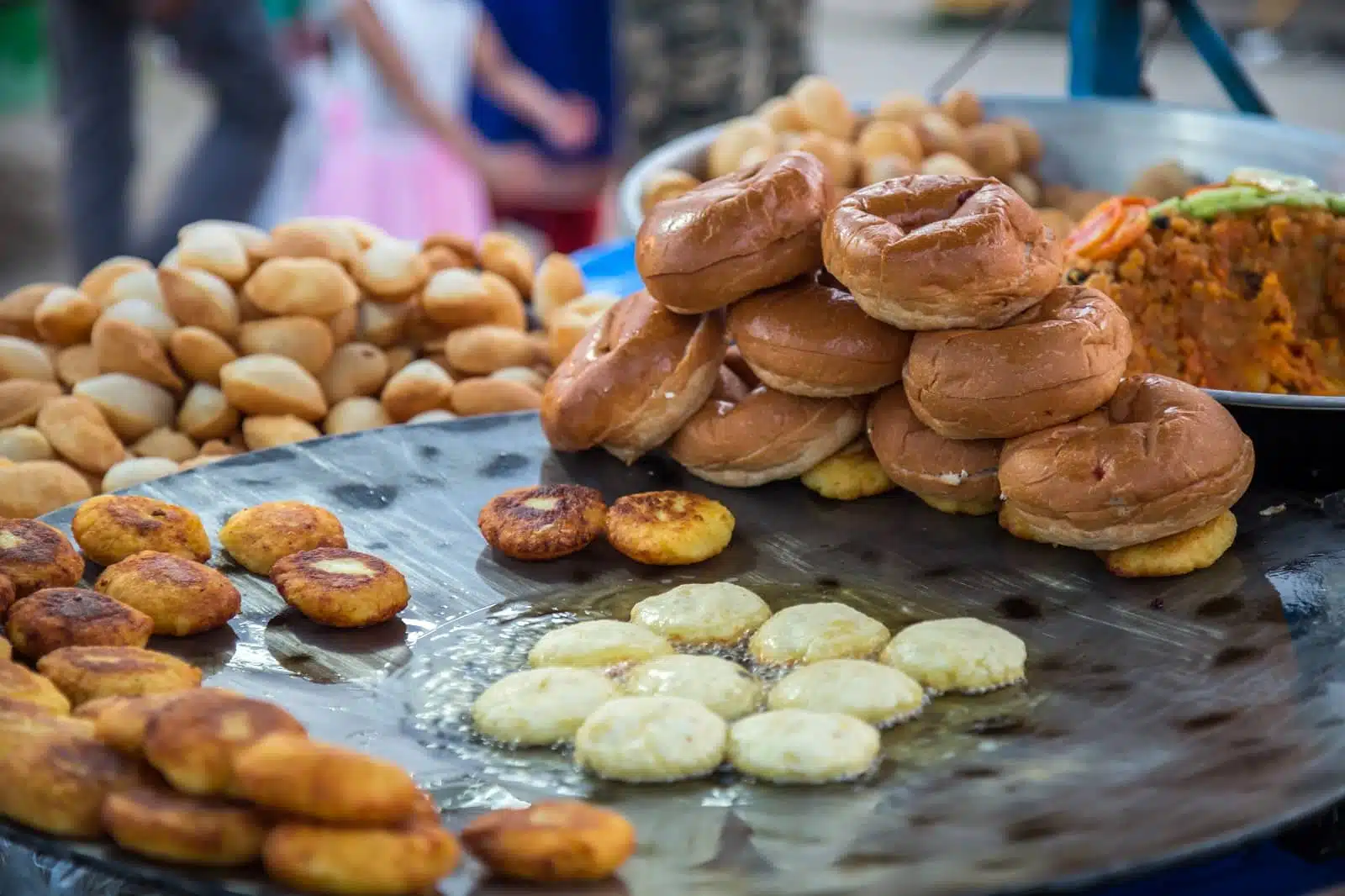
Image Credit: Shutterstock / greenaperture
The Golden Triangle offers a culinary journey through India’s rich flavors and spices. Delhi’s street food, Agra’s Mughlai cuisine, and Jaipur’s Rajasthani dishes provide a feast for the senses. In Delhi, savor the chaat at Connaught Place or the kebabs in Old Delhi. Agra is famous for its petha, a sweet made from pumpkin, and savory kormas. Do not miss the traditional Rajasthani thali in Jaipur, which includes dishes like dal baati churma and laal maas.
Insider’s Tip: Visit local food markets with a guide who can introduce you to hidden culinary gems and explain the intricacies of the dishes.
When to Travel: Year-round, though the cooler months from October to March are more comfortable for outdoor dining experiences.
How to Get There: Each city’s culinary highlights are centrally located, easily accessible by local transport or on guided food tours.
8. Art and Craft Workshops
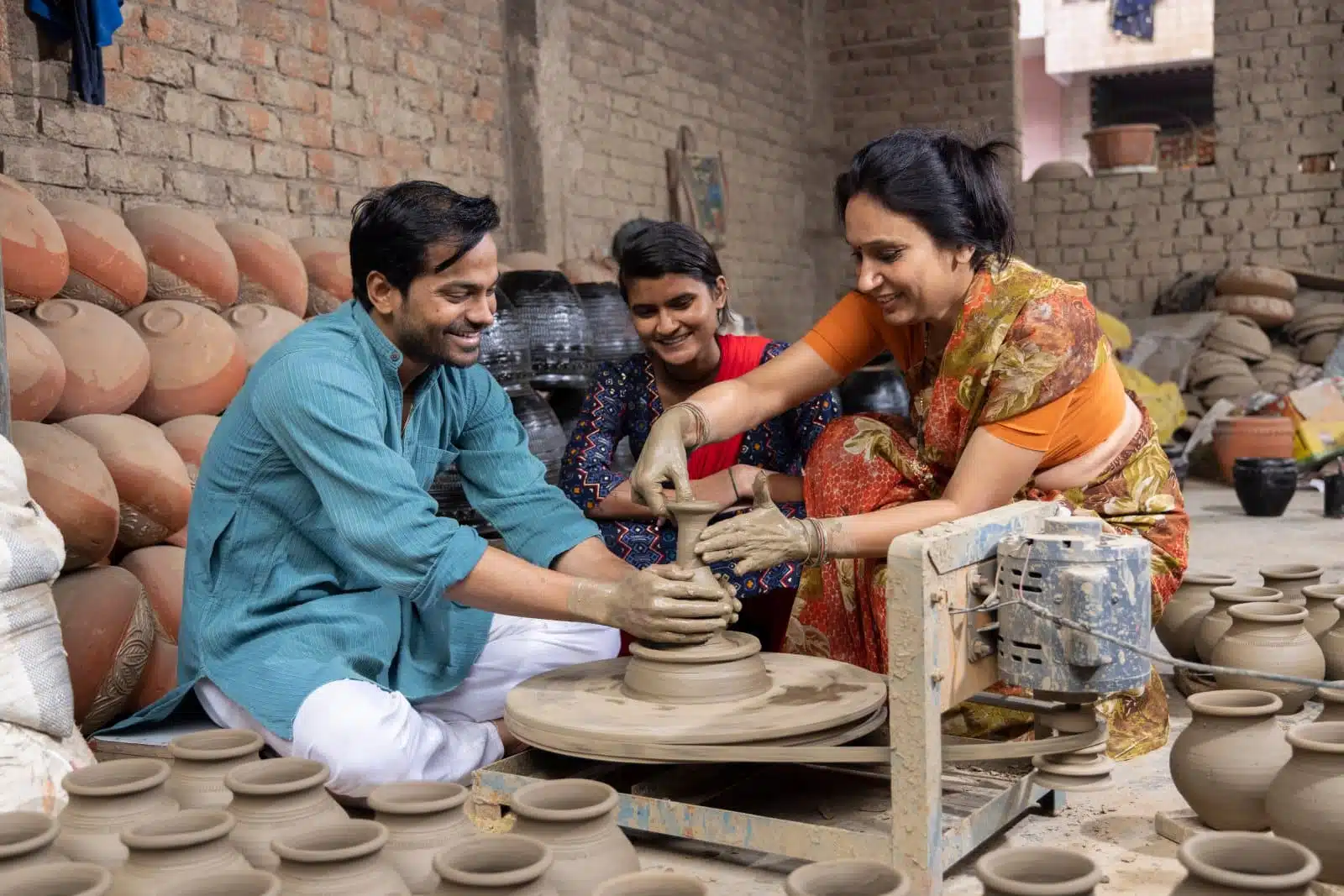
Image Credit: Shutterstock / IndianFaces
Participating in art and craft workshops across the Golden Triangle offers an immersive experience into India’s artistic traditions. Delhi’s craft museums and studios offer workshops in pottery and textile arts. Agra is renowned for its marble inlay work, with workshops allowing visitors to try their hand at this intricate craft. Jaipur’s tie-dye and block printing workshops provide insight into traditional Rajasthani textile designs, offering a hands-on experience in creating your own fabric designs.
Insider’s Tip: Choose workshops that contribute to local communities or are run by artisans, ensuring an authentic learning experience.
When to Travel: Workshops run year-round, but the cooler months from October to March are more comfortable for indoor and outdoor activities.
How to Get There: Workshops are often part of cultural tours or can be arranged through local travel agencies in each city.
9. Exploring the Markets of Jaipur
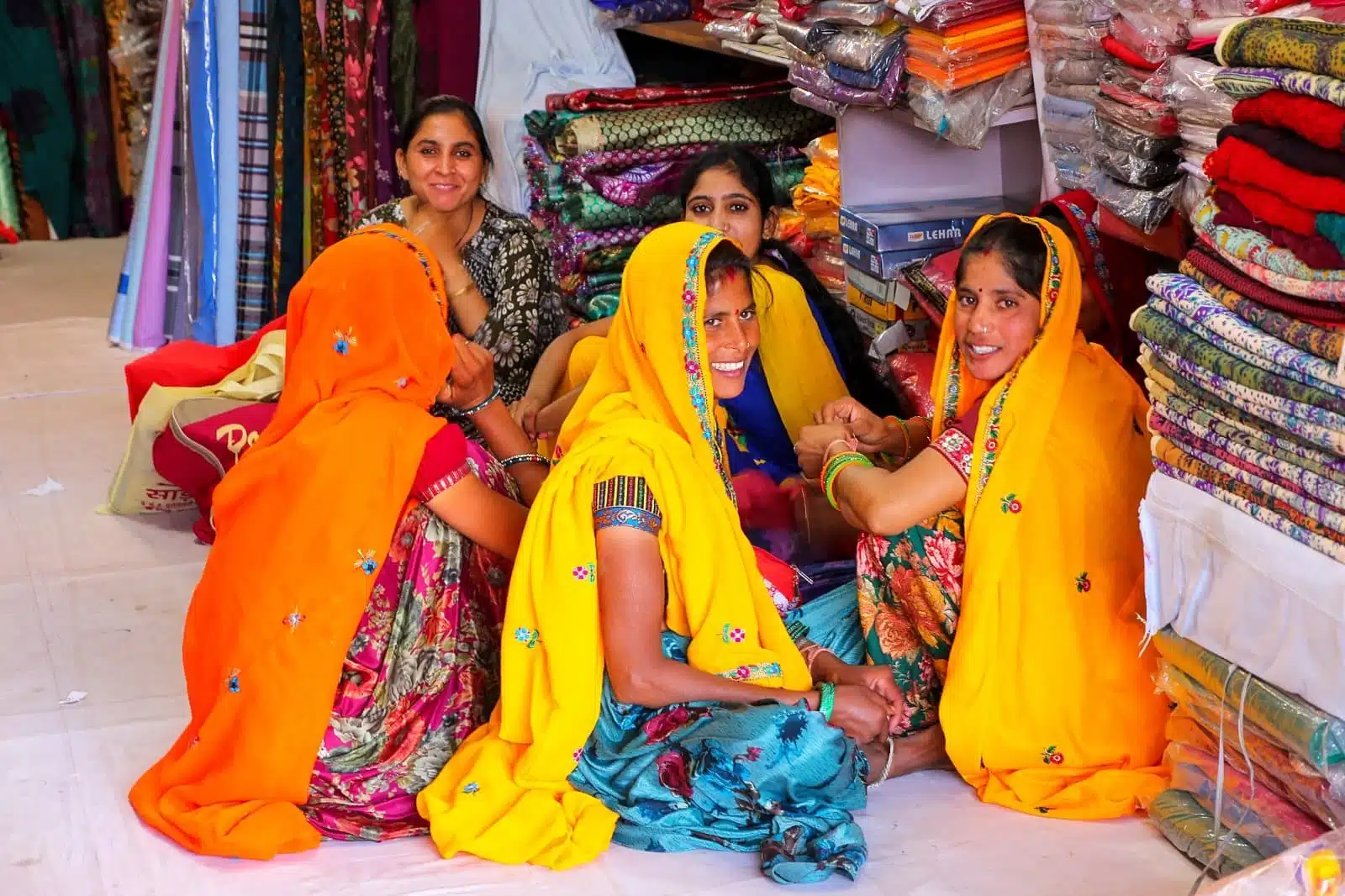
Image Credit: Shutterstock / Don Mammoser
Jaipur, known as the Pink City, is famous for its historic forts and palaces and its vibrant markets. These bazaars are alive with a riot of colors, offering everything from traditional Rajasthani jewelry and textiles to various handicrafts. The Johari Bazaar is renowned for its exquisite gemstones and jewelry, while the Bapu Bazaar is the go-to place for Rajasthani juttis (traditional leather shoes), scarves, and textiles. Exploring these markets offers a glimpse into the local craftsmanship and the opportunity to pick up unique souvenirs. Haggling is part of the shopping experience; visitors can enjoy the thrill of negotiating prices with the friendly shopkeepers.
Insider’s Tip: For an authentic shopping experience, visit the markets in the late afternoon when they are less crowded, allowing for a more relaxed exploration.
When to Travel: The best time to visit Jaipur for market exploration is from November to February when the weather is pleasant, making it comfortable to wander through the bustling bazaars.
How to Get There: Jaipur is well-connected by road and rail from major cities. Within Jaipur, auto-rickshaws and cabs offer convenient ways to reach the markets.
10. Sunrise at the Taj Mahal, Agra
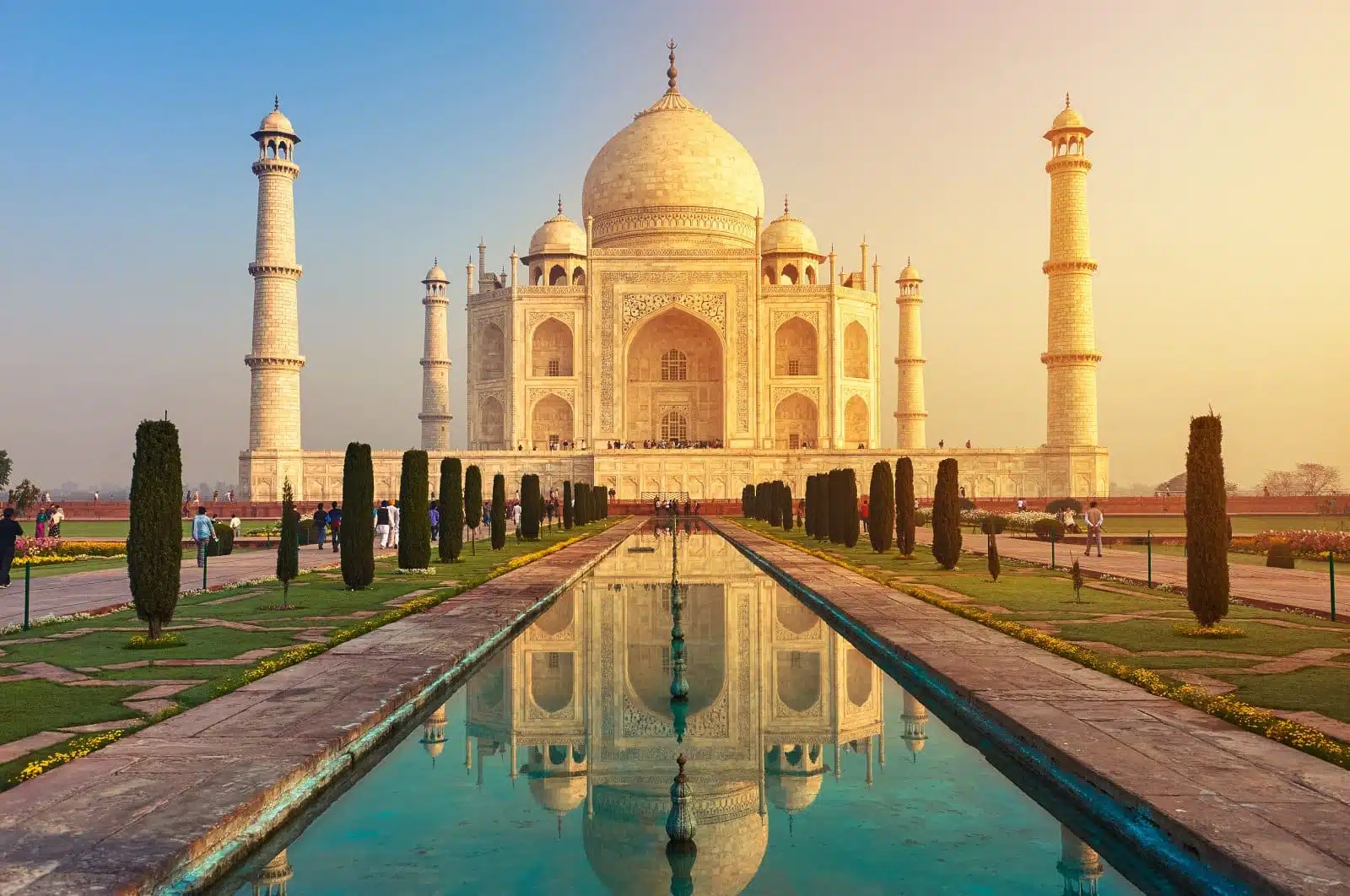
Image Credit: Shutterstock / YURY TARANIK
The Taj Mahal, is one of the Seven Wonders of the World, offers a breathtaking sight not to be missed — the sunrise view. Witnessing the first rays of the sun illuminate the white marble mausoleum is a magical experience. The early morning light bathes the Taj Mahal in a soft, golden hue, highlighting its intricate craftsmanship and majestic beauty. This time of day is perfect for photography and allows for a more serene experience, away from the crowds that gather as the day progresses. A visit to the Taj Mahal at sunrise is a moment of profound beauty and tranquility, offering a glimpse into the architectural genius of the Mughal era.
Insider’s Tip: Buy your tickets online to avoid long queues and arrive at the gates by 5:30 AM to be one of the first to enter.
When to Travel: The best time to visit the Taj Mahal for a sunrise tour is from November to February when the weather is cooler and the morning fog adds a mystical allure to the monument.
How to Get There: Agra is well-connected by road and rail from Delhi and Jaipur. The Taj Mahal is located in the heart of Agra, easily accessible by taxi or auto-rickshaw from any part of the city.
11. Folk Culture of Rajasthan in Jaipur
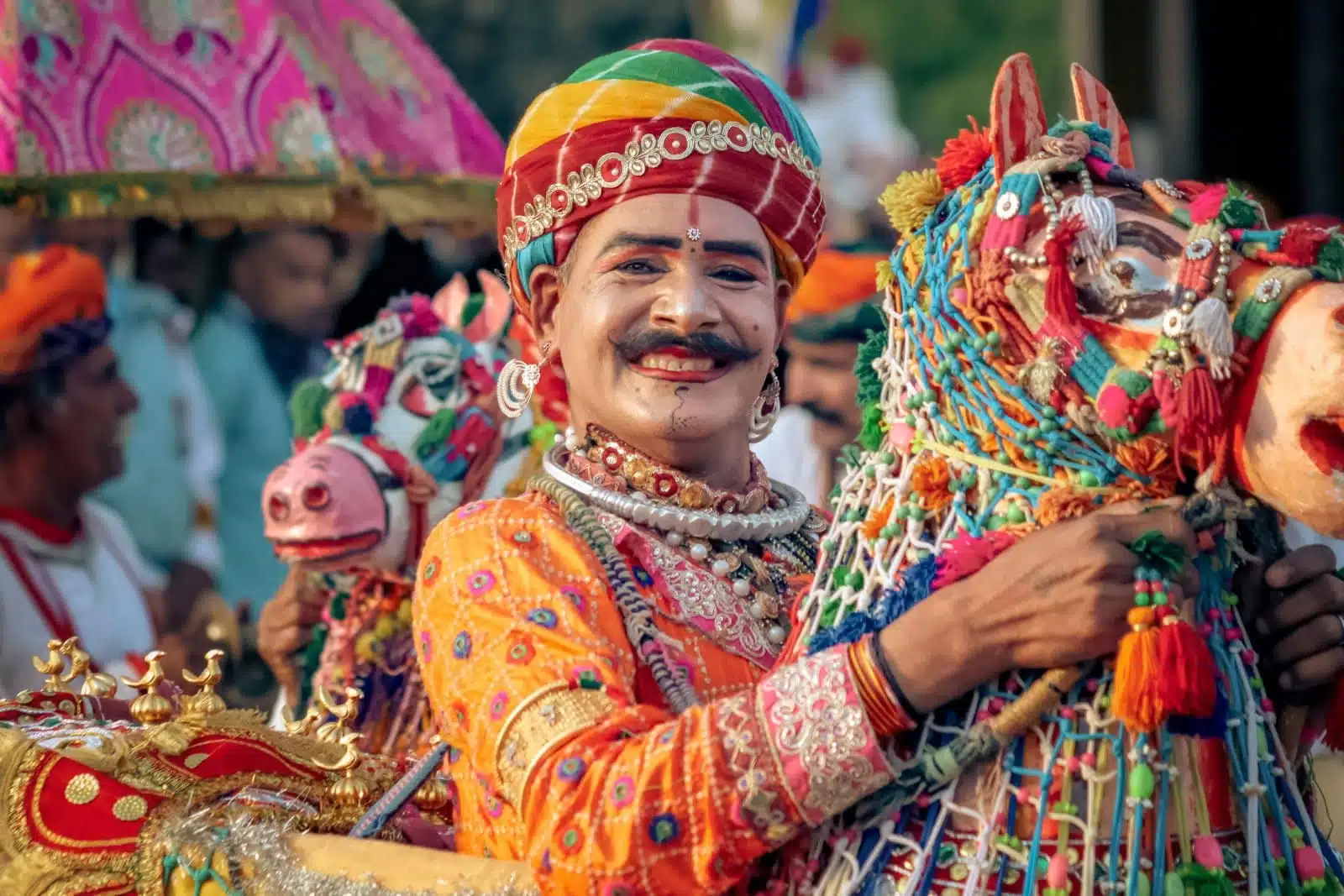
Image Credit: Shutterstock / Sunil lodhwal
Jaipur is not only famous for its historic architecture but also for its rich folk culture. Experiencing a traditional Rajasthani cultural performance is a must-do when visiting Jaipur. These performances include folk music, dance, and puppet shows that tell tales of heroism, love, and the everyday life of Rajasthan’s people. Venues like the Amer Fort and various cultural centers in Jaipur host these enchanting performances, providing a glimpse into the soul of Rajasthani heritage. The colorful costumes, lively music, and graceful dance moves of the performers make for an unforgettable evening.
Insider’s Tip: Attend a performance at the Chokhi Dhani Village Resort, where you can also enjoy traditional Rajasthani cuisine in an authentic setting.
When to Travel: The cultural performances in Jaipur can be enjoyed throughout the year, but the cooler months from October to March offer a more comfortable experience.
How to Get There: Jaipur is accessible by air, road, and rail from major Indian cities. Local transportation in Jaipur, such as taxis, buses, and auto-rickshaws, can easily take you to the performance venues.
12. The Stepwells of Rajasthan Near Jaipur
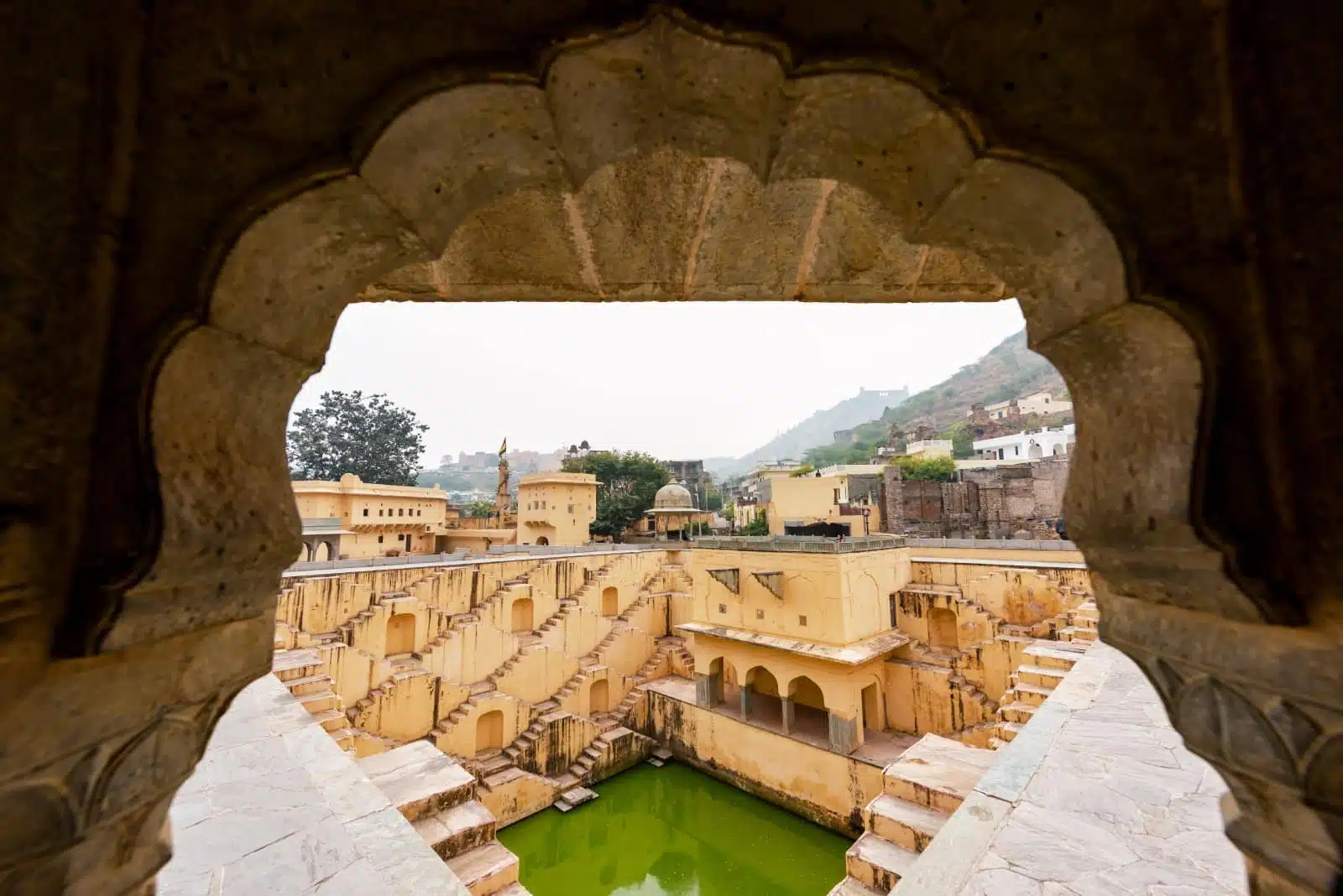
Image Credit: Shutterstock / PhilipYb Studio
The stepwells of Rajasthan, known as ‘baoris,’ are ancient water storage systems that are architectural marvels in their own right. Near Jaipur, the Chand Baori in Abhaneri is one of the world’s largest and most beautiful stepwells, dating back to the 9th century. This stepwell features 3,500 narrow steps descending 20 meters to the water’s surface, arranged in perfect symmetry. Exploring these stepwells offers a unique insight into ancient Indian engineering, architecture, and the region’s historical water conservation methods. The geometric precision and the sheer scale of Chand Baori make it a photographer’s delight and a must-visit for those interested in historical architecture.
Insider’s Tip: Visit early in the morning or late afternoon to avoid the harsh sunlight, which can make the descent into the stepwell challenging to navigate and photograph.
When to Travel: The best time to visit the stepwells near Jaipur is from October to March when the weather is cooler and more pleasant for exploration.
How to Get There: Abhaneri is located about 95 kilometers from Jaipur and is accessible by road. Hiring a taxi for a day trip is the most convenient option for exploring Chand Baori and other nearby attractions.
13. Polo Match in Jaipur
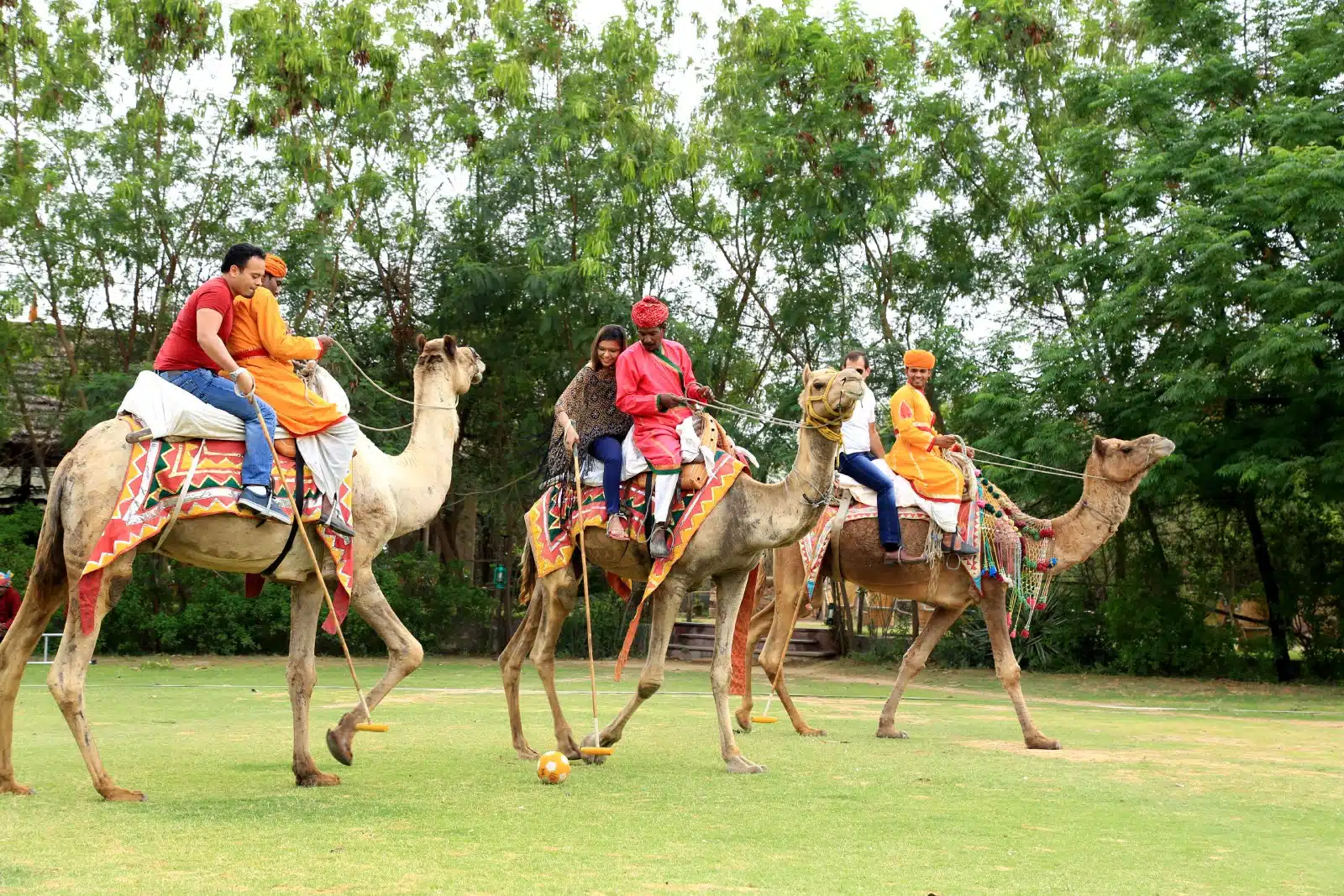
Image Credit: Shutterstock / Mukesh Kumar Jwala
Polo, the sport of kings, has a long and illustrious history in Jaipur, with the city being one of India’s traditional polo centers. Attending a polo match in Jaipur offers a glimpse into the regal sport and the opportunity to witness the thrilling action up close. The Jaipur Polo Ground is one of the premier venues where local and international matches are held, often attended by the royalty and elite of Rajasthan. The experience of watching skilled horsemen in traditional attire competing on the field is exhilarating and offers insight into the aristocratic heritage of Jaipur.
Insider’s Tip: Check the polo season schedule in advance and try to attend a match during one of the major tournaments for the most vibrant atmosphere.
When to Travel: The polo season in Jaipur runs from September to April, with the peak tournaments taking place between December and February.
How to Get There: The Jaipur Polo Ground is centrally located and easily accessible from anywhere in Jaipur by taxi or auto-rickshaw.
The Bottom Line
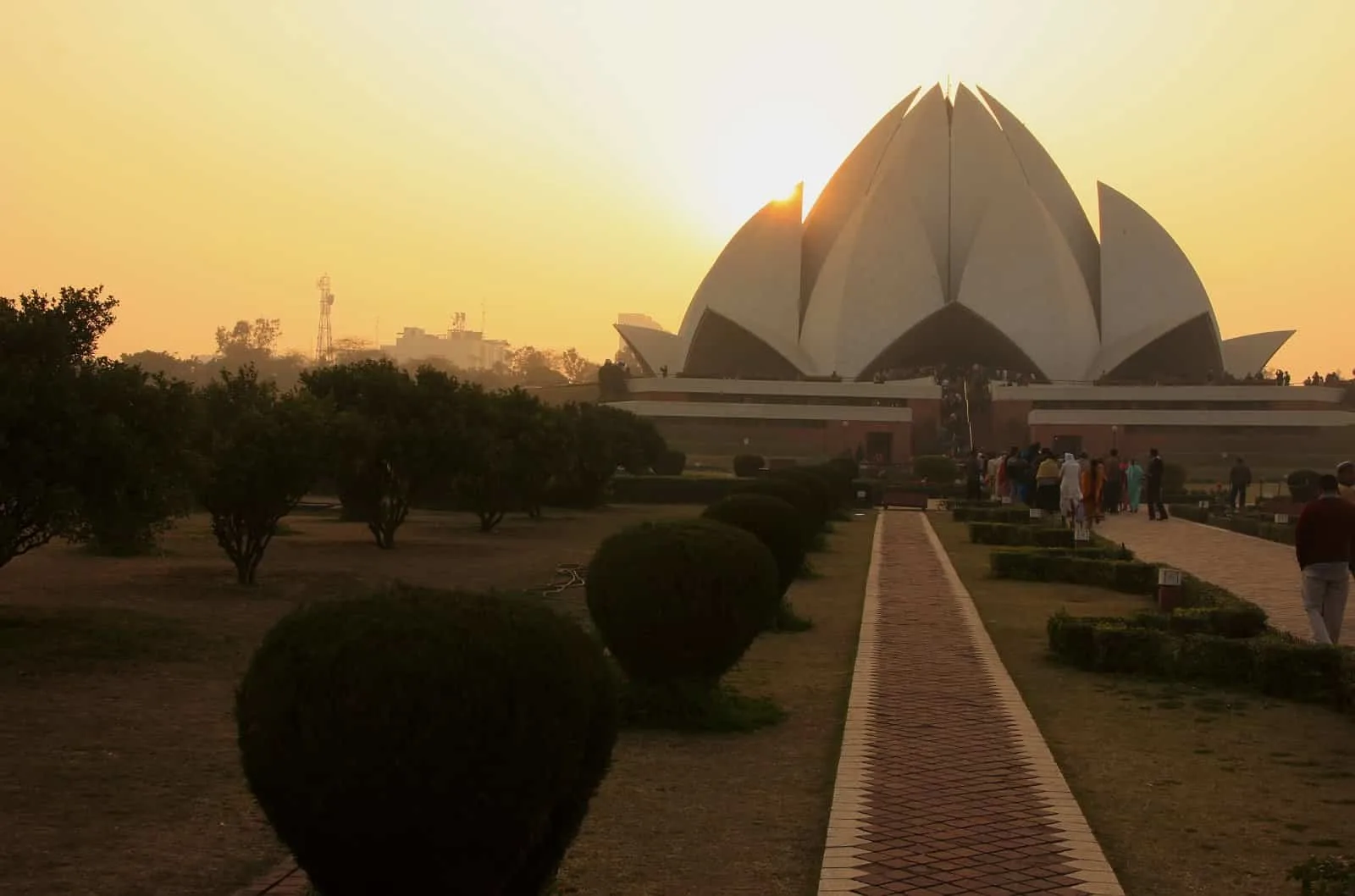
Image Credit: Shutterstock / Don Mammoser
Exploring the Golden Triangle offers a journey through the heart of India’s historical grandeur, culinary richness, and vibrant culture. From the architectural wonders of Delhi, Agra, and Jaipur to the bustling markets and serene heritage sites, each city presents a unique palette of experiences. Engaging with the local crafts, savoring the diverse flavors, and immersing yourself in the cultural heritage allows a deeper understanding and appreciation of India’s multifaceted beauty. As you plan your journey, remember to embrace the diversity, seek out authentic experiences, and travel with an open heart and mind.
More From The Green Voyage
Top 10 Trending Travel Destinations 2024
6 Essential Banking Apps for International Travel – Managing Your Finances on the Go
Traveling With Kids – 10 Tips to Create Memorable Family Holidays
The post Exploring India’s Golden Triangle – Delhi, Agra, and Jaipur first appeared on The Green Voyage.
Featured Image Credit: Shutterstock / SasinTipchai.
For transparency, this content was partly developed with AI assistance and carefully curated by an experienced editor to be informative and ensure accuracy.
Tips for Trip Success
Book Your Flight
Find an inexpensive flight by using Kayak, a favorite of ours because it regularly returns less expensive flight options from a variety of airlines.
Book Your Hotel or Special Accommodation
We are big fans of Booking.com. We like their review system and photos. If we want to see more reviews and additional booking options, we go to Expedia.
You Need Travel Insurance!
Good travel insurance means having total peace of mind. Travel insurance protects you when your medical insurance often will not and better than what you get from your credit card. It will provide comprehensive coverage should you need medical treatment or return to the United States, compensation for trip interruption, baggage loss, and other situations.Find the Perfect Insurance Plan for Your Trip
